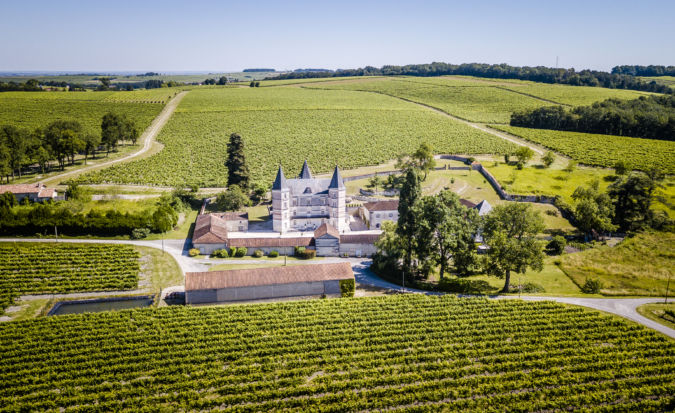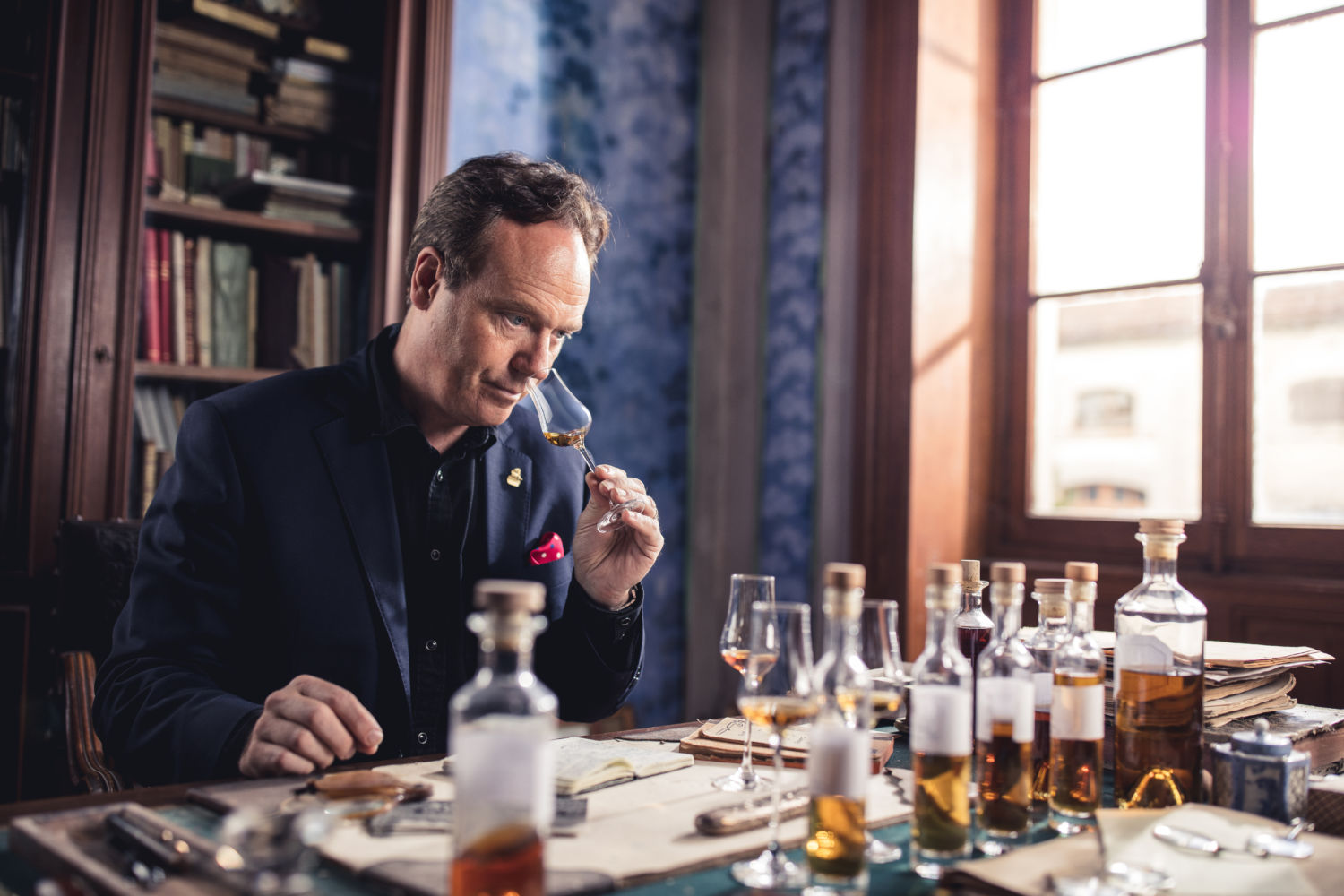South of the sleepy town of Jarnac, the rolling chalk-bleached hills of Grande Champagne measure the passage of time not in years or decades but in centuries. History is written by the winners, and in Cognac’s case, the winners were the early merchants and blenders. Their descendants – the big four houses of Hennessy, Martell, Rémy Martin and Courvoisier – are today responsible for 85% of all the Cognac consumed around the world. And the vast majority of what they make is blends, painstakingly constructed from hundreds of individual eaux-de-vie.
Now, though, the status quo is being challenged, and much of the change is coming from within. A younger brigade of distillers is experimenting with innovative cask maturation techniques and championing a fresh emphasis on that most French of concepts: terroir. Some would like to go even further, ripping up Cognac’s strict rulebook to allow the doors of creativity to be thrown open. Instead of just using oak casks for maturation, why not chestnut? Or mulberry?


The new wave of brandies that these mavericks are creating come not in the glitzy crystal carafes that embody Cognac’s luxury lifestyle status but in plain, elegant bottles featuring functional labels that tell a story of cask numbers, bottling dates and precisely annotated ABV levels.
It’s a far cry from the primitive scene 750 years ago, when the Frapin family settled near Segonzac, in the heart of Grande Champagne. The Frapins were wine growers back in 1270, but when they moved into distillation, the connection with the vine was maintained. Today, Frapin makes every drop of Cognac from its own vineyards (some 240ha in Grande Champagne, the jewel in Cognac’s crown, carpeted as it is with the region’s finest vineyards) and doesn’t sell to anyone else – a rarity in a region built on the power of broker and merchant.
‘It was very dry here in 2018, but it’s not a problem for us,’ says Patrice Piveteau, Frapin’s cellar master, surveying the late autumn vineyards near Frapin’s home at Château de Fontpinot. ‘The chalk here is like a sponge.’ The subsoil is so crumbly that vine roots can stretch 10 to 12 metres down to find water; this is one of the keys to the supreme quality and longevity of Grande Champagne Cognacs.
Like Frapin, Hine has its roots in the vineyards. Both cellar masters – Eric Forget and Pierre Boyer – joined from the wine industry, and that mentality has aided the creation of Domaines Hine, a series of vintage bottlings from Hine’s 80ha of vineyards in Bonneuil, in the heart of Grande Champagne.

Traditionally, these deep chalk soils create eaux-de-vie that demand long ageing, but Domaines Hine vintages mature for less than a decade, with an unusually gentle cask influence. ‘We want to show what the vineyard does in any year – so closer to wine than to the conventional idea of Cognac,’ says Forget.
The fourth bottling from Domaines Hine Bonneuil, from the 2010 vintage, is due to launch this autumn, following releases from 2005, 2006 and 2008. Each yields no more than 20 casks, or a few hundred bottles. The Cognacs encapsulate the raw character of Grande Champagne – hugely floral, with lime and vine flower – before time and oak can fully exert their influence.
In some ways, Delamain is the opposite of Frapin. It owns no vineyards but acts as a blender and bottler of eaux-de-vie. It, too, is exploring the possibilities of provenance, in a new range under the name Pléiade: single-cask, single-vineyard Cognacs are arranged into three tiers of progressively old liquids – Collection Révélation, Collection Plénitude and Collection Apogée.
The first tranche of cask-strength releases, labels crammed with enough information to satisfy the most demanding spirits nerd, name-checks the communes in which the grapes were grown: Malaville, Mainxe and Verrières. Aged for more than 30 years, these are Cognacs that express terroir in its entirety, from soil and grape variety to maturation and the human art of cask selection.


Grande Champagne may be the most illustrious subregion in Cognac, but each locale plays its part, from the lighter chalk influence of Petite Champagne to the clay-limestone of Fins Bois and the more diverse Bons Bois appellation. Eaux-de-vie from Fins Bois and Bons Bois may lack finesse and longevity, but they have plenty of fruit and structure to keep the blenders happy.
Then there is the Borderies enclave, north of the Charente river and the smallest of the subregions. Here, there is less chalk on the surface, and the eaux-de-vie are delicate, floral and beguiling in their youth. Martell has always been a big fan of Borderies, but the biggest landowner here is Camus, whose vineyards sit on a mineral-rich plateau, yielding single-estate VSOP and XO Cognacs of unique character.
Camus has done more than most to explore the extremes of the hugely diverse Cognac region (France’s largest in terms of white wine), including its bottlings from the northwesterly outpost of the Ile de Ré, off the coast at La Rochelle and dubbed ‘the Orkney of Cognac’ for its distinctive maritime salinity.
The vineyards of Monbazillac, south of Bergerac, are about 250km from the Ile de Ré, but this is Cognac country, too – or at least it was historically. Here, Camus discovered the last remaining Cognac vineyards in St-Aulaye, replanted them and created a limited run of 3,000 bottles of a Cognac finished in Monbazillac sweet wine casks.


Beyond its historic provenance, Camus’s Monbazillac Cask Finish project was notable for its exclusive use of the Colombard grape variety. Theoretically, you can distil any one of six varietals in Cognac, but the region’s vineyards are 98% Ugni Blanc – Italy’s bland Trebbiano, here at its northern limits, which produces light, acidic wines perfect for distillation.
Few distillers are interested in anything other than Ugni Blanc (although Frapin is experimenting with Folignan, a modern cross between Ugni Blanc and Folle Blanche). But Camus isn’t alone in exploring other possibilities.
‘Every time we can, we plant Colombard,’ says Alex Gabriel, founder of Grande Champagne-based Maison Ferrand. ‘It comes from Cognac originally… It’s delicious, full of grape-flower flavours and much more aromatic.’ A little Colombard is used in the blend for Ferrand’s Ambrée Cognac, and Gabriel would like to use more in future.
Such experimentation is evidence of a growing appreciation in Cognac that notions of provenance and terroir can take many forms, spanning vineyard location, soil, grape variety and the process of maturation. Here, the rules are tight – too tight for Gabriel, who would like to use outlawed mulberry or chestnut barrels, as well as oak – but there is still scope for originality. Some 20% of Ferrand’s 10 Generations Cognac is matured in ex-Sauternes casks, while even Courvoisier has ‘finished’ a VSOP in Oloroso Sherry casks.
If cask types are one area of potential flavour creation, maturation conditions are another. As a producer wholly based in Grande Champagne, Frapin’s vineyards are relatively lacking in diversity – so Piveteau builds in different flavours during ageing.
Eaux-de-vie maturing in humid cellars lose more alcohol than they do water, creating more roundness and suppleness, while those in dry, warmer cellars lose more water than alcohol, making for robust flavours but more elegance and finesse. This is apparent in Frapin’s newly launched 1992 vintage Cognac. The 3,000-bottle release spent 26 years in the dry conditions of the Marie Frapin cellar, bringing a refined elegance to its mix of ripe and rich dried fruits.
There’s no doubt that the Cognac region remains one that is instinctively focused on the art of blending – the highly skilled creation of Cognacs that are greater than the considerable sum of their parts – and that will remain the lifeblood of the region for the foreseeable future. But Cognacs like those now being made by Frapin, Hine, Camus and Delamain – unblended, distinctive and rich in provenance – are adding new layers of colour and interest to what can sometimes seem a rather staid and solemn drink. And as this movement expands and evolves, you might soon find yourself arranging your Cognac collection not by age classification but by vintage, vineyard location and terroir type.
Scroll down for five recommendations of new-wave Cognacs
This article is taken from the latest issue of Club Oenologique magazine. To subscribe or purchase issue 6, click here







